Feng shui architecture style incorporates the principles and practices of an ancient Chinese system of harmonizing individuals with their environment. It focuses on creating spaces that promote balance, harmony, and positive energy flow. Here are some key characteristics of feng shui architecture:
-
Site Selection: Feng shui architecture begins with careful site selection. The location and orientation of the building are considered to ensure optimal energy flow and alignment with natural elements. Factors such as topography, surrounding landscape, and proximity to water sources are taken into account.
-
Flow of Qi: Qi, or life force energy, is a central concept in feng shui. The architecture aims to facilitate the smooth flow of qi throughout the space. Buildings are designed with open floor plans, curved lines, and unobstructed pathways to allow qi to circulate freely and avoid stagnant areas.
-
Balance of Yin and Yang: Feng shui architecture seeks to achieve a balance between yin and yang energies. Yin represents passive, calm, and receptive qualities, while yang represents active, vibrant, and dynamic qualities. The design incorporates both yin and yang elements to create a harmonious environment.
-
Five Elements: The five elements—wood, fire, earth, metal, and water—are fundamental in feng shui. Feng shui architecture integrates these elements through the use of materials, colors, and shapes. For example, wood may be represented by wooden beams or furniture, while water can be symbolized by fountains or reflective surfaces.
-
Natural Light and Ventilation: Feng shui architecture emphasizes the importance of natural light and ventilation. Large windows, skylights, and open spaces are incorporated to maximize the entry of natural light and fresh air. This promotes a healthy and vibrant living environment.
-
Symbolism and Meaning: Feng shui architecture often includes symbolic elements and meaningful decorations. These can include auspicious symbols, such as the dragon or phoenix, or representations of natural elements like plants and animals. These symbols are believed to enhance positive energy and bring good fortune.
-
Harmonious Colors: Color selection is crucial in feng shui architecture. Different colors are associated with specific elements and energies. For example, green represents growth and vitality, while red symbolizes passion and abundance. The choice of colors is carefully considered to create a harmonious and balanced atmosphere.
-
Outdoor Spaces: Feng shui architecture extends beyond the building itself to include outdoor spaces. Gardens, courtyards, and pathways are designed to align with feng shui principles. These spaces provide opportunities for relaxation, meditation, and connection with nature.
This is one of the forty original architectural styles based on which I generated references for the interior and exterior of the target building.
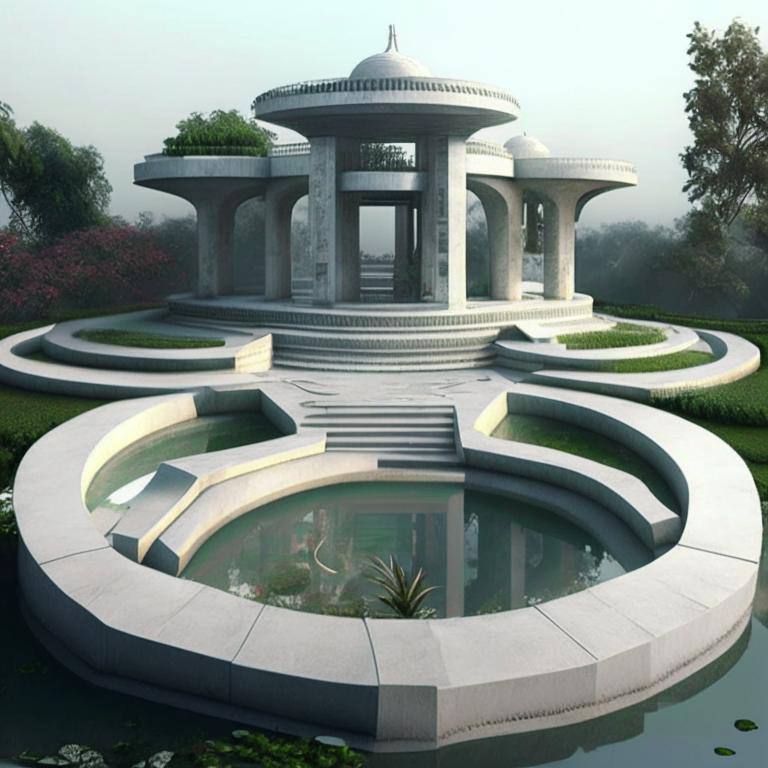
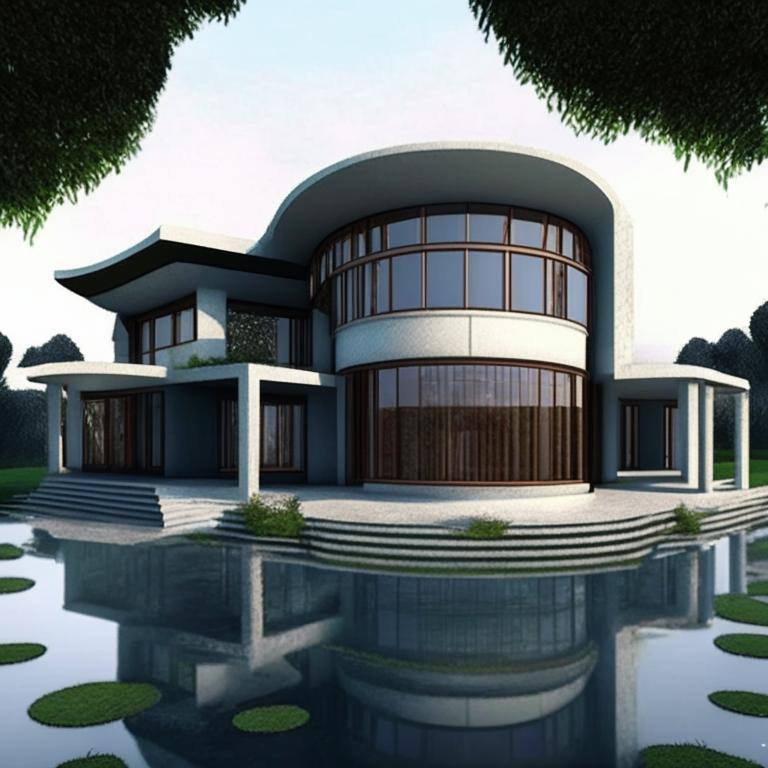
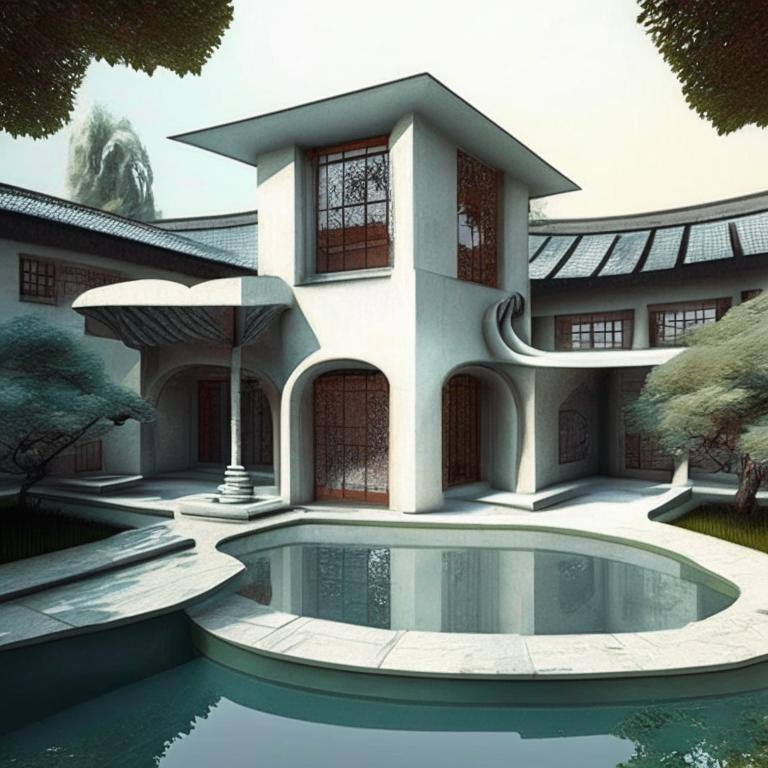
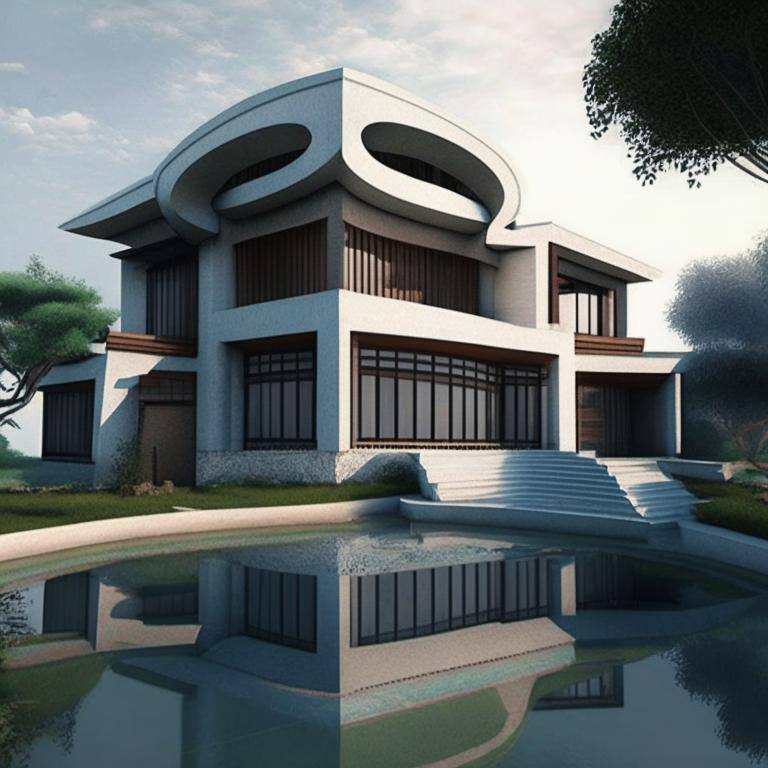
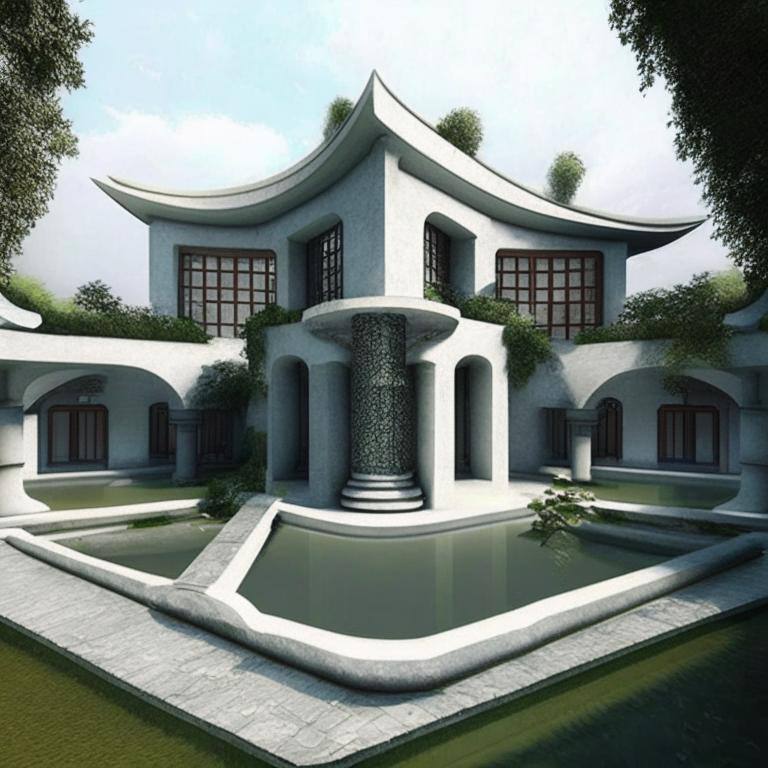
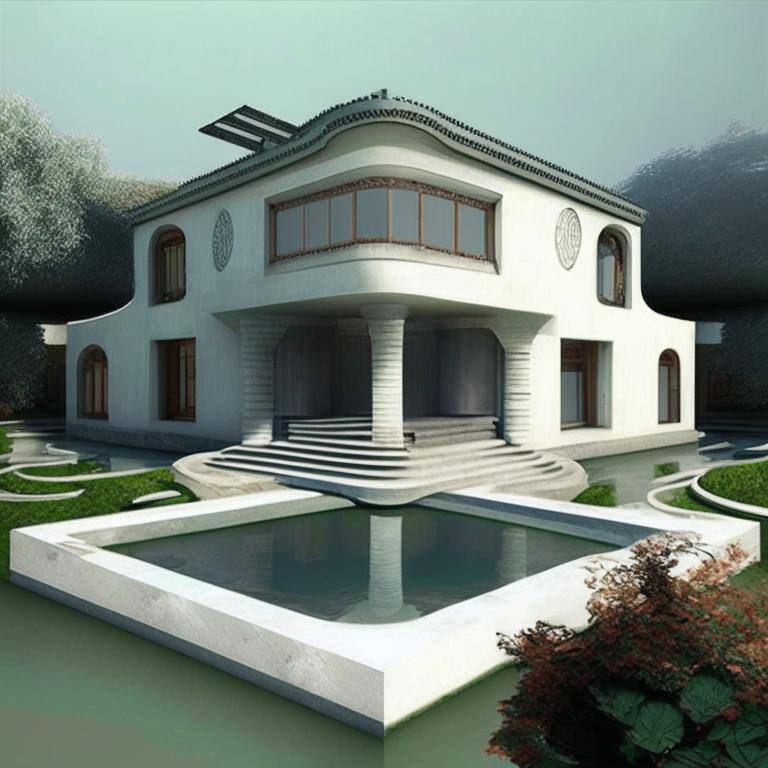
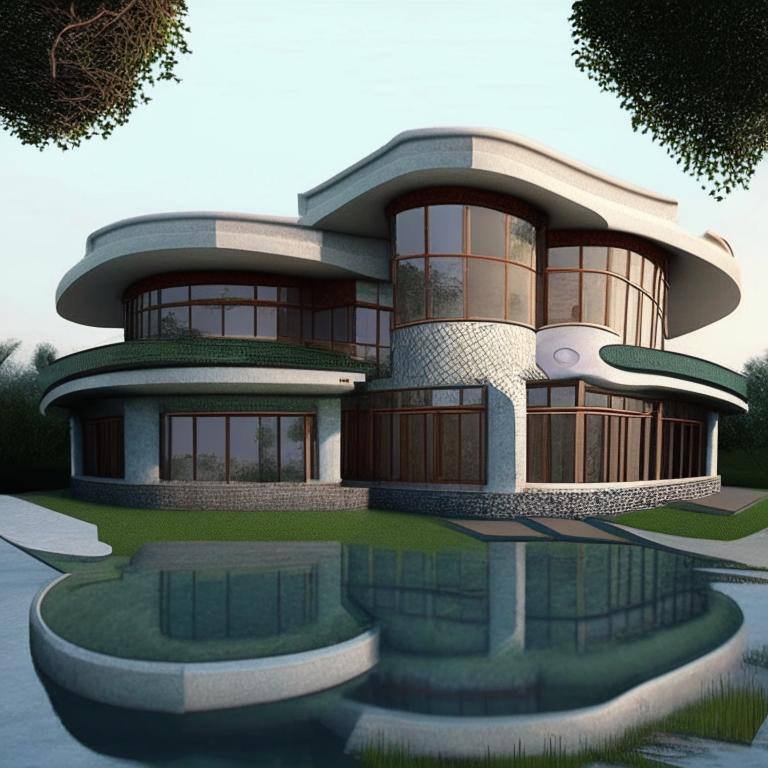
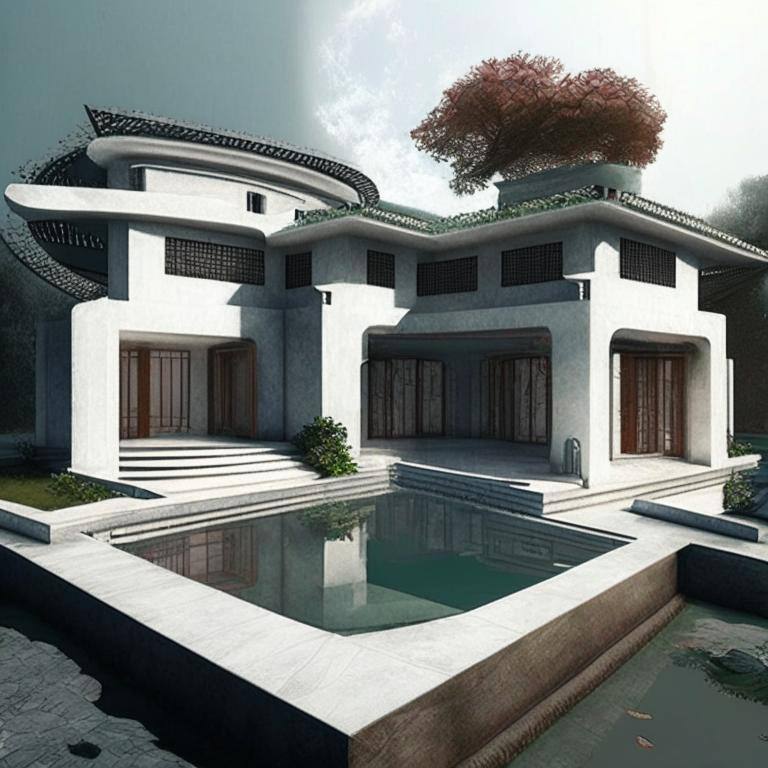
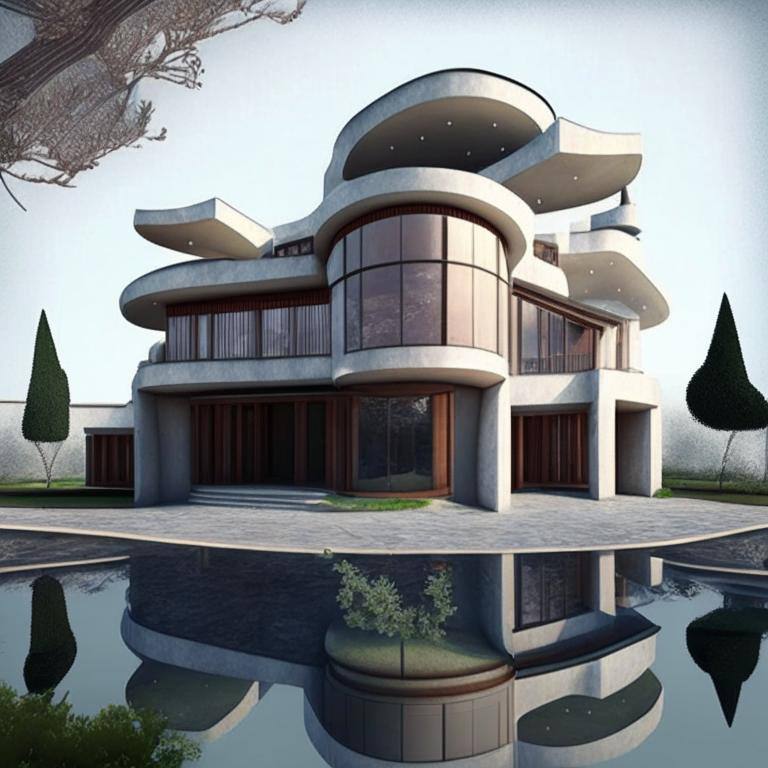
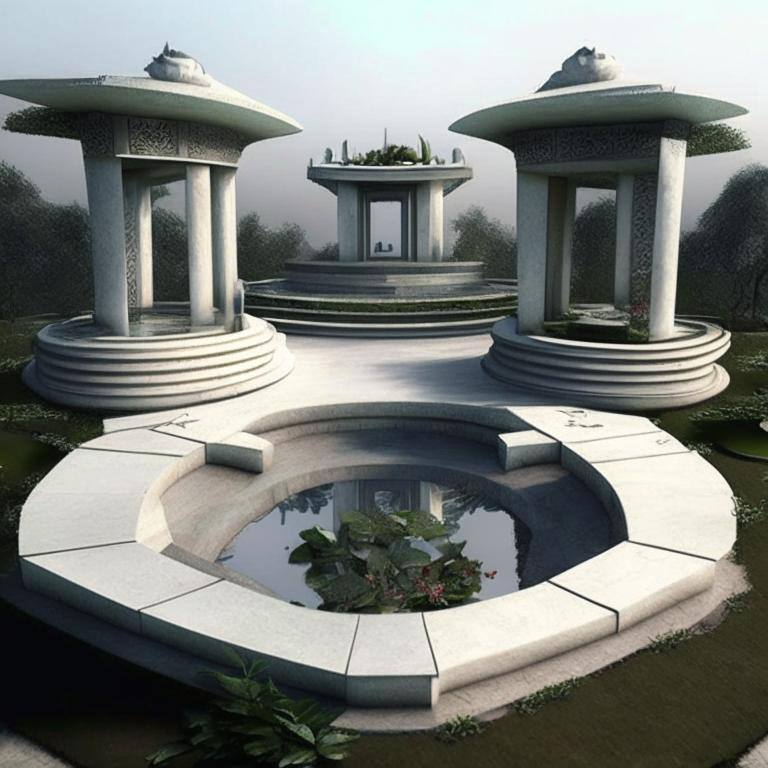

There is no comments